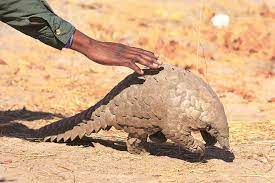Wildlife trafficking is a serious issue that poses a significant threat to biodiversity around the world. It involves the illegal capture, transportation, and trade of wild animals and plants, and their parts or products. This practice is driven by the demand for exotic pets, traditional medicines, and luxury goods, among other things. In this blog post, we will discuss the impact of wildlife trafficking on biodiversity, as well as some of the efforts being made to combat this global problem.
Impact on Biodiversity
Wildlife trafficking is a major contributor to the loss of biodiversity. It often involves the capture and trade of endangered species, which can have a significant impact on the survival of these species in the wild. In addition, the methods used to capture and transport these animals often result in injury or death, further depleting their populations. The illegal wildlife trade can also introduce invasive species into new ecosystems, disrupting natural habitats and threatening local species.
Efforts to Combat Wildlife Trafficking
There are several efforts being made to combat wildlife trafficking. Governments around the world are enacting laws and regulations to crack down on this illegal trade. Many countries have established wildlife protection agencies and have increased penalties for those caught trafficking in wildlife. In addition, there are several international agreements and organizations that are working to combat this global problem, such as the Convention on International Trade in Endangered Species of Wild Fauna and Flora (CITES).
Non-governmental organizations (NGOs) also play a vital role in the fight against wildlife trafficking. They raise awareness about the impact of this practice on biodiversity and advocate for stronger laws and regulations to protect wildlife. NGOs also provide support for law enforcement agencies and work to disrupt illegal wildlife trafficking networks.
In conclusion, wildlife trafficking is a serious threat to biodiversity around the world. It is a complex issue that requires global cooperation to address effectively. Efforts are being made to combat this illegal trade, but more needs to be done to protect the world’s wildlife. We all have a role to play in this effort, whether it be by supporting NGOs that work to combat wildlife trafficking, advocating for stronger laws and regulations, or simply avoiding products made from endangered species. By working together, we can help ensure a sustainable future for our planet’s wildlife.




